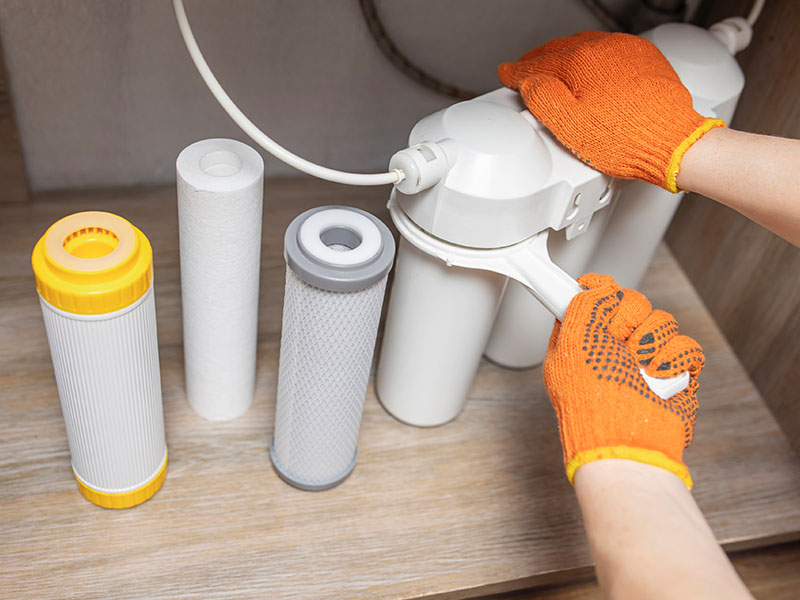If you’ve ever received your local water quality report in the mail, you likely found yourself staring at a long table of numbers, abbreviations, and scientific terms. Many homeowners and business owners glance at these reports before quickly setting them aside, unsure of whether the information is relevant or even concerning. Yet these reports play a critical role in helping you understand what’s in your water and how it may affect your health, plumbing system, and overall quality of life.
Learning to interpret the data in a water quality report will provide you with the knowledge you need to make important decisions about your home’s water supply. That’s our mission at Kel Tren WaterCare: to ensure our customers understand what’s in their water and what it means for them and their families. In this article, we’ll break down what a water quality report is, why it matters, and how to use it to make informed decisions about water treatment.
What Is a Water Quality Report?
A water quality report, sometimes referred to as a Consumer Confidence Report, is a document prepared annually by your local water utility. It provides detailed information about the source of your water, detected contaminants, and whether the water meets federal safety standards established by the Environmental Protection Agency (EPA).
These reports are required by law for all community water systems in the United States that serve the same people year-round. By making this information available, water utilities allow consumers to better understand what they’re drinking and how their water supply is regulated. While the reports can be technical, they are meant to promote transparency and empower consumers.
Key Elements Found in a Water Quality Report
Most water quality reports share the same sections, even if the format looks different. One of the first pieces of information you’ll see is the source of your water. This may include groundwater from wells, surface water from lakes and rivers, or a blend of both. Understanding where your water comes from can give you a baseline for the types of issues it may face.
The report also outlines detected contaminants. These can include naturally occurring substances like minerals, as well as man-made contaminants. The man-made contaminants may include pesticides, industrial byproducts, and disinfectant chemicals used in water treatment.
Each contaminant is usually presented in terms of concentration levels, measured against a regulatory threshold called the Maximum Contaminant Level (MCL). If levels are within the acceptable range, the water utility will note compliance.
Another critical part of the report is the section on potential health effects. For example, contaminants such as lead or nitrates can have serious health consequences if present above safe limits. The report may also address vulnerable populations, such as infants, pregnant women, or individuals with compromised immune systems.
Understanding Common Terms and Abbreviations
When reviewing a water quality report, the technical terms and abbreviations can feel overwhelming. Here are some of the most common ones that you should understand:
- MCL (Maximum Contaminant Level)
This is the legal, enforceable limit set by the EPA for a contaminant in drinking water. In short, it represents the highest amount of a substance allowed before it becomes unsafe by law. If your water meets the MCL, it is considered compliant and legally safe to drink. - MCLG (Maximum Contaminant Level Goal)
Unlike the MCL, this is not enforceable—it’s a health-based target. It represents the ideal level of a contaminant where no known or expected health risks exist. While water providers may not always meet this stricter standard, it serves as a benchmark for what scientists believe is safest for long-term health. - MRDL (Maximum Residual Disinfectant Level)
Disinfectants like chlorine are added to water to kill bacteria and keep it safe as it travels through pipes. The MRDL sets the maximum safe level for these chemicals, since too much can pose its own health risks. This balance ensures your water is protected from harmful microbes while avoiding overexposure to disinfectants.
By understanding the difference between these terms, you will be better equipped to determine whether your water supply just meets the minimum legal requirements (MCL, MRDL) for safety or comes closer to the health-based goals (MCLG). This awareness can help you decide if adding a home filtration system is a logical choice for you and your family.
Why Water Quality Reports Matter
Water quality reports are more than just compliance documents; they are essential tools for protecting your health and the health of your family. Even when your water meets all legal standards, you may still notice issues such as an unpleasant taste, cloudy appearance, or lingering odors. Regulatory limits do not always address these types of water concerns, despite the fact that they can signal the presence of water imbalances.
For example, chlorine is commonly used to disinfect municipal water supplies. While effective at killing harmful bacteria, chlorine can leave behind a chemical taste or odor. Similarly, hard water caused by elevated mineral content may pass safety standards but still lead to scale buildup in pipes and appliances.
Understanding your water quality report allows you to identify potential problems and take corrective action. If contaminants are near the maximum limits or if you experience ongoing taste, odor, or hardness issues, professional water treatment solutions can provide peace of mind and improve water quality.
The Role of Private Wells and Unregulated Sources
While most community water systems provide water quality reports, households and businesses that rely on private wells are not included. That means well owners are responsible for monitoring and testing their own water. Without regular testing, it is impossible to know whether harmful contaminants are present.
Private wells can be affected by many of the same issues as public water supplies, such as bacteria, nitrates, or heavy metals. Agricultural runoff, septic systems, and industrial activities can all contribute to water contamination. For well owners, scheduling annual water testing will enable you to take action if your water has quality issues. You will have the information you need to implement effective, professional water treatment solutions, which will provide you with safe, quality drinking water.
How Water Treatment Services Can Help
If your water quality report shows the presence of contaminants such as lead, nitrates, or arsenic, there are effective water treatment solutions available. Water filtration systems like reverse osmosis can effectively remove a wide range of contaminants from water. Many are so effective that they can provide purified water that exceeds EPA standards for safety.
Hard water issues can also be tackled using advanced water softeners. These remove concerns like excess calcium and magnesium, which can otherwise cause scale buildup and plumbing system damage.
Beyond solving immediate concerns, professional water treatment services also provide ongoing monitoring and maintenance, ensuring your filtration systems continue to perform even if water conditions change in the future. Expert water treatment with reliable long-term support makes it possible to go beyond simply understanding your report. It enables you to gain access to safe, clean, and dependable water.
Trust Kel Tren WaterCare to Provide You with Solutions
Water quality reports are valuable tools that provide insight into the safety and composition of your water supply. While they can be difficult to understand at first glance, learning how to interpret them allows you to make informed decisions about your water. Even if your water quality report shows that all legal standards are met, it may still reveal concerns that are worth addressing with water treatment solutions.
At Kel Tren WaterCare, we take pride in helping our customers bridge the gap between compliance and truly high-quality water. If you’ve recently reviewed your water quality report and want expert advice on the best treatment options, we’re here to help. Contact us today to schedule a consultation and take the first step toward safer, better-tasting water.




